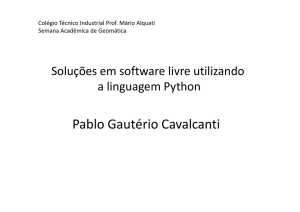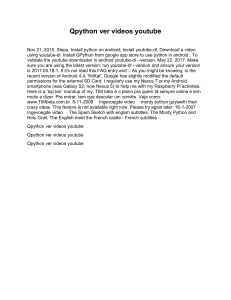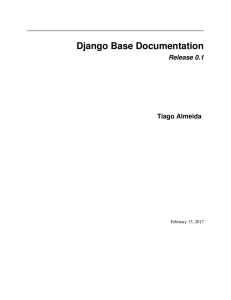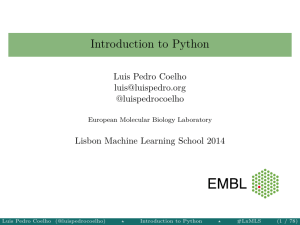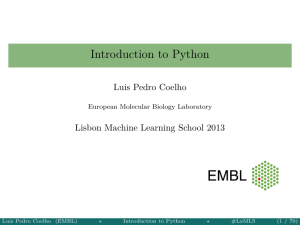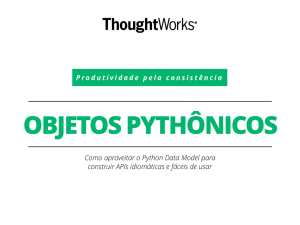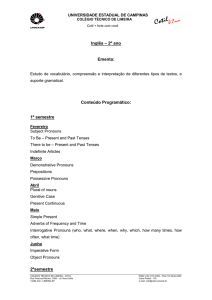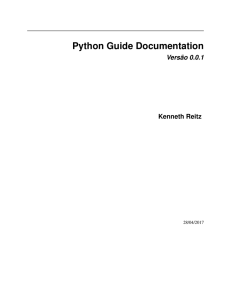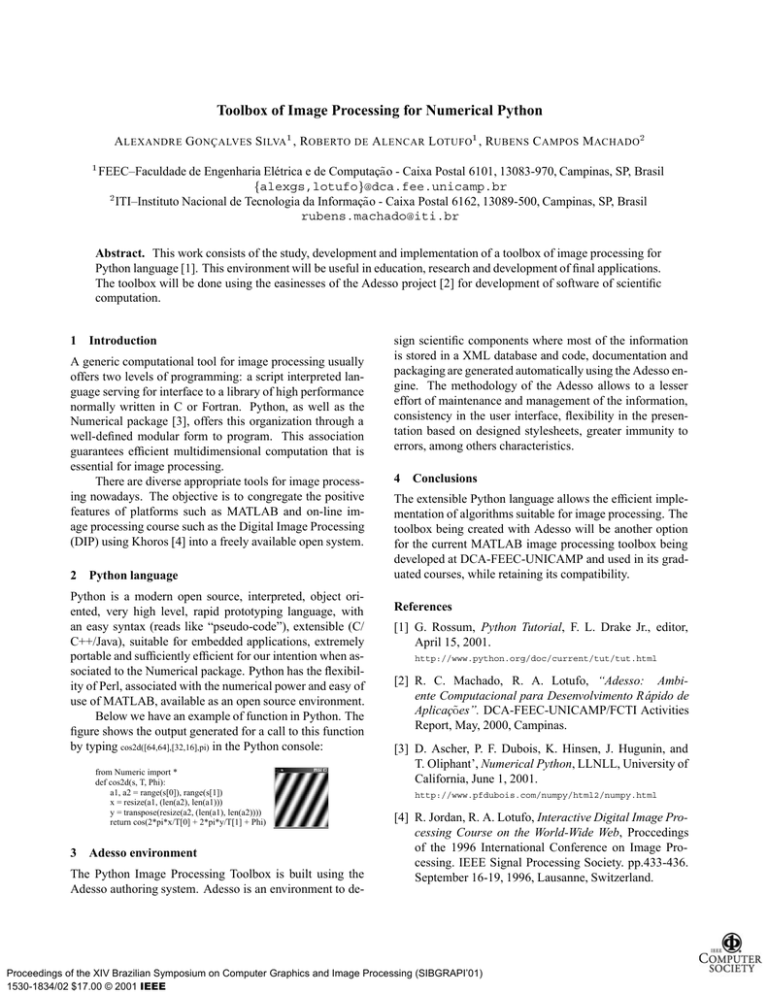
Toolbox of Image Processing for Numerical Python
A LEXANDRE G ONÇALVES S ILVA 1 , ROBERTO DE A LENCAR L OTUFO 1 , RUBENS C AMPOS M ACHADO2
1 FEEC–Faculdade de
Engenharia Elétrica e de Computaç~
ao - Caixa Postal 6101, 13083-970, Campinas, SP, Brasil
falexgs,[email protected]
2 ITI–Instituto Nacional de Tecnologia da Informaç~
ao - Caixa Postal 6162, 13089-500, Campinas, SP, Brasil
[email protected]
Abstract. This work consists of the study, development and implementation of a toolbox of image processing for
Python language [1]. This environment will be useful in education, research and development of final applications.
The toolbox will be done using the easinesses of the Adesso project [2] for development of software of scientific
computation.
1 Introduction
A generic computational tool for image processing usually
offers two levels of programming: a script interpreted language serving for interface to a library of high performance
normally written in C or Fortran. Python, as well as the
Numerical package [3], offers this organization through a
well-defined modular form to program. This association
guarantees efficient multidimensional computation that is
essential for image processing.
There are diverse appropriate tools for image processing nowadays. The objective is to congregate the positive
features of platforms such as MATLAB and on-line image processing course such as the Digital Image Processing
(DIP) using Khoros [4] into a freely available open system.
2 Python language
Python is a modern open source, interpreted, object oriented, very high level, rapid prototyping language, with
an easy syntax (reads like “pseudo-code”), extensible (C/
C++/Java), suitable for embedded applications, extremely
portable and sufficiently efficient for our intention when associated to the Numerical package. Python has the flexibility of Perl, associated with the numerical power and easy of
use of MATLAB, available as an open source environment.
Below we have an example of function in Python. The
figure shows the output generated for a call to this function
by typing cos2d([64,64],[32,16],pi) in the Python console:
from Numeric import *
def cos2d(s, T, Phi):
a1, a2 = range(s[0]), range(s[1])
x = resize(a1, (len(a2), len(a1)))
y = transpose(resize(a2, (len(a1), len(a2))))
return cos(2*pi*x/T[0] + 2*pi*y/T[1] + Phi)
3 Adesso environment
The Python Image Processing Toolbox is built using the
Adesso authoring system. Adesso is an environment to de-
sign scientific components where most of the information
is stored in a XML database and code, documentation and
packaging are generated automatically using the Adesso engine. The methodology of the Adesso allows to a lesser
effort of maintenance and management of the information,
consistency in the user interface, flexibility in the presentation based on designed stylesheets, greater immunity to
errors, among others characteristics.
4 Conclusions
The extensible Python language allows the efficient implementation of algorithms suitable for image processing. The
toolbox being created with Adesso will be another option
for the current MATLAB image processing toolbox being
developed at DCA-FEEC-UNICAMP and used in its graduated courses, while retaining its compatibility.
References
[1] G. Rossum, Python Tutorial, F. L. Drake Jr., editor,
April 15, 2001.
http://www.python.org/doc/current/tut/tut.html
[2] R. C. Machado, R. A. Lotufo, “Adesso: Ambiente Computacional para Desenvolvimento R ápido de
oes”. DCA-FEEC-UNICAMP/FCTI Activities
Aplicaç~
Report, May, 2000, Campinas.
[3] D. Ascher, P. F. Dubois, K. Hinsen, J. Hugunin, and
T. Oliphant’, Numerical Python, LLNLL, University of
California, June 1, 2001.
http://www.pfdubois.com/numpy/html2/numpy.html
[4] R. Jordan, R. A. Lotufo, Interactive Digital Image Processing Course on the World-Wide Web, Proccedings
of the 1996 International Conference on Image Processing. IEEE Signal Processing Society. pp.433-436.
September 16-19, 1996, Lausanne, Switzerland.
Proceedings of the XIV Brazilian Symposium on Computer Graphics and Image Processing (SIBGRAPI’01)
1530-1834/02 $17.00 © 2001 IEEE


